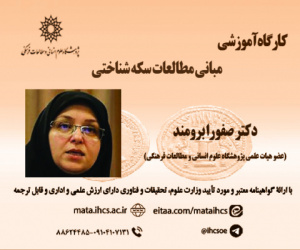ماندن یا مهاجرت مجدد (مطالعه عوامل مؤثر بر ناپایداری مهاجرت بازگشتی در میان نیروی کار ماهر و متخصص ایرانی) (مقاله علمی وزارت علوم)
درجه علمی: نشریه علمی (وزارت علوم)
آرشیو
چکیده
دهه ها است که ایران به عنوان یکی از کشورهای فرستنده مهاجر، به ویژه قشر تحصیل کرده و متخصص شناخته می شود، اما به مسئله بازگشت آنان کمتر پرداخته شده است. از این رو پژوهش حاضر با ورود به مبحث کلی مهاجرت بازگشتی ایرانیان، آن را از منظر چرایی ناپایداری بازگشت های ایرانی از خلال قصد (بالقوه یا بالفعل) مهاجرت مجدد در میان تحصیل کردگان بازگشتی بررسی می کند. جامعه مورد مطالعه تحصیل کردگانی هستند که در بازه زمانی 1370 تا 1400 به ایران بازگشته اند. از میان آنان 33 نمونه به صورت تصادفی انتخاب شدند. داده ها به روش «مصاحبه عمیق» گردآوری، با روش «تماتیک» تحلیل، و نهایتاً با استفاده از نظریه «رفاه اجتماعی» از «فیتزپتریک» پشتیبانی شدند. یافته ها حاکی از آن است که چهار عامل به عنوان مقوله های اصلی بر ناپایداری بازگشت ها اثر می گذارند که هرکدام شامل عوامل زیرمجموعه ای تحت عنوان مقوله های فرعی هستند. پربسامدترین کدها مربوط به مقوله اصلی «محدودیت معاش» است که ذیل دو مقوله فرعی «درآمد ناکافی» و «افق ایدئال بازنشستگی» بررسی شده اند. سپس سه مقوله اصلی دیگر یعنی «دست اندازهای زندگی جمعی»، «پیشران های درونی» و «مهاجرت آونگی» به عنوان دیگر عوامل مؤثر بر مهاجرت مجدد به دست آمدند و همگی ذیل مقوله هسته ای «تمنای تمهید زیستی» قرار گرفتند. نتیجه آنکه ناپایداری مهاجرت بازگشتی در ایران لزوماً از روی نارضایتی (چه مطلق و چه نسبی) مصاحبه شوندگان از شرایط زندگی نیست، بلکه برخی برای به روزشدن دانش و مهارتشان یا به اقتضای تخصص خود، تصمیم به مهاجرت مجدد می گیرند.Staying or Re-migrating (A Study of the Factors Affecting the Instability of Return Migration among the Specialists and Professional Iranian Workforce)
For decades, Iran has been known to be one of the countries that send immigrants, especially the specialists and professional workforce. However, the matter of their return has not been comprehensively addressed. Therefore, this research has investigated the reasons for the instability of Iranian returns by examining the intention (potential or actual) of remigration among returnees, thereby addressing the broader topic of return migration of Iranians.
33 samples were randomly selected from the educated population who returned to Iran between 1990 and 2021, which is the subject of the study. The “thematic” analysis technique is supported by the “Social Welfare Theory” by “Fitzpatrick” as the base theory, while the “in-depth interview” method is used for data collection.
The findings indicate that the instability of returns is influenced by four main categories, each of which comprises its own specific sub-categories. The most frequently occurring codes pertain to “unfavorable economic circumstances,” which are investigated under the two subcategories of “insufficient income” and “ideal retirement conditions abroad.” Three additional primary categories, “collective life challenges,” “psychological drivers,” and “tendency to commute,” were perceived as additional factors that influenced re-migration. All factors that have been mentioned are classified under the umbrella term “physiological needs.”
The results reveal that the instability of return migration in Iran is not inherently attributable to the interviewees’ dissatisfaction or frustration (either absolute or relative) with the current conditions of Iran. Nevertheless, some individuals elect to migrate again to enhance their knowledge and professions.







